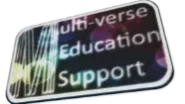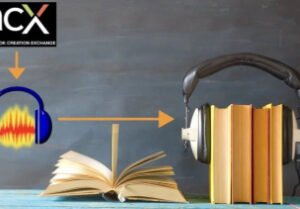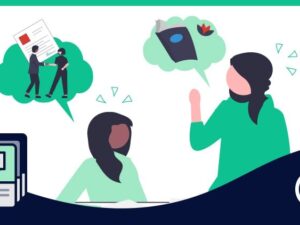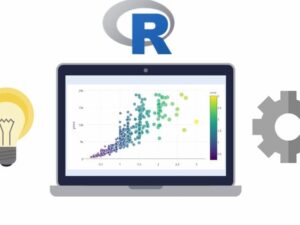StudiGuide 37: People with Disabilities
- Description
- Curriculum
- FAQ
- Reviews
This StudiGuide course provides a practice review-testing resource for police academy cadets (based on the state of California’s Commission on Peace Officer Standard and Training ‘POST’ requirements) to help understand and pass the POST written examinations.
DIFFERENTIATE between courses of action for peace officers when dealing with a person who appears to be affected by a mental illness and is a danger to others, a danger to self, gravely disabled or not dangerous or gravely disabled
DEFINE:
• the term mental illness
• the term developmental disability
LIST:
• the types of mobility assistance equipment and devices
• the categories of mental illness which include Thought disorders including schizophrenia and Mood disorders including depression and bipolar
IDENTIFY methods an officer can use to communicate with a person who is deaf or hard of hearing
RECOGNIZE:
• the role of peace officers when interacting with a person with a disability
• general behavioral indicators associated with all developmental disabilities
• behavioral indicators specifically associated with the following developmental disabilities such as Mental retardation, Cerebral Palsy, Autism or Epilepsy
• appropriate peace officer actions during field contacts with people with the following developmental disabilities such as Mental retardation, Cerebral Palsy, Autism or Epilepsy
• behavioral or other indicators that may lead an officer to identify a person as being Blind or visually impaired, or Deaf or hard of hearing
• appropriate peace officer actions during field contacts with people who are Blind or visually impaired, or Deaf or hard of hearing
• behavioral indicators that may be generally associated with people affected by mental illness
• indicators officers may use to help determine if a person affected by a mental illness is a danger to others, a danger to self, or gravely disabled due to mental illness
• appropriate tactical actions when responding to a call that involves a person with a mental illness
• behavioral indicators that may lead an officer to believe a person with mental illness may be a danger to others or a danger to self
• peace officer actions when a person affected by mental illness does not meet detention under the Welfare and Institutions Code section 5150
STATE:
• the intent of the Americans with Disabilities Act of 1990
• the intent of the Lanterman-Petris-Short Developmental Disabilities Service Act (Welfare and Institutions Code Sections 4500 et. seq.)
EXPLAIN:
• state and local resources available to people with disabilities
• the intent of the Lanterman-Petris-Short Act (Welfare and Institutions Code section 5150)
DISCUSS:
• the types of neurological disorders, including Acquired and Traumatic
• additional laws that protect the rights of people with physical disabilities, including:
• Rehabilitation Act of 1973, Section 504
• Right of way (Vehicle Code Section 21963)
• White Cane Law (Civil Code Section 54.4)
• Service Animals (Penal Code Section 365.5 et. seq.)
Selected information from this written examination will also appear on your End-of-Course Proficiency Test.
-
1StudiGuide IntroductionVideo lesson
Students will understand the nature and format of questions that may appear on the California POST police academy written examinations for this course.
Students will be able to familiarize themselves with the POST workbooks and find out other information via the POST website.
-
2Test Taking TipsVideo lesson
Students will understand test taking tips for the California POST police academy written examinations.
-
3Discussion PostVideo lesson
Students will be able to ask any question, leave comments and/or rate this course for the benefit of others.
-
5Americans with Disabilities Act (ADA)Video lesson
Students will be able to state the intent of the Americans with Disabilities Act of 1990.
-
6Peace Officer Interactions with People with DisabilitiesVideo lesson
Students will be able to understand peace officer interactions with people with disabilities during any type of call for peace officer assistance.
-
7State and Local Resources AvailableVideo lesson
Students will be able to understand the resource services available to peace officers and individuals with mental illness, physical disabilities, and developmental disabilities.
-
8Disability Laws Review QuestionsQuiz
Lecture Review Questions.
-
9Lanterman Developmental Disabilities Services ActVideo lesson
Students will be able to understand and state the intent of the Lanterman Developmental Disabilities Services Act.
-
10Developmental Disability DefinedVideo lesson
Students will be able to understand the definition of developmental disability.
-
11Developmental Disabilities: General Behavioral IndicatorsVideo lesson
Students will be able to understand the adjustments peace officers may need to make when making contact with people with developmental disabilities.
-
12Mental Retardation: Behavioral IndicatorsVideo lesson
Students will be able to understand the adjustments peace officers may need to make when making contact with people with mental retardation.
-
13Mental Retardation: Field ContactsVideo lesson
Students will be able to understand that the behavior of a person with a developmental disability can be misinterpreted by the reporting party and by responding officers who, if possible should take time to observe the behaviors exhibited by the person to determine possible reasons for the person's behavior and appropriate response actions.
-
14Cerebral Palsy: Behavioral IndicatorsVideo lesson
Students will be able to understand the adjustments peace officers may need to make when making contact with people with cerebral palsy.
-
15Cerebral Palsy: Field ContactsVideo lesson
Students will be able to understand that the behavior of a person with a developmental disability can be misinterpreted by the reporting party and by responding officers who, if possible should take time to observe the behaviors exhibited by the person to determine possible reasons for the person's behavior and appropriate response actions.
-
16Autism: Behavioral IndicatorsVideo lesson
Students will be able to understand the adjustments peace officers may need to make when making contact with people with autism.
-
17Autism: Field ContactsVideo lesson
Students will be able to understand that the behavior of a person with a developmental disability can be misinterpreted by the reporting party and by responding officers who, if possible should take time to observe the behaviors exhibited by the person to determine possible reasons for the person's behavior and appropriate response actions.
-
18Epilepsy: Behavioral IndicatorsVideo lesson
Students will be able to understand the adjustments peace officers may need to make when making contact with people with epilepsy.
-
19Epilepsy: Field ContactsVideo lesson
Students will be able to understand that the behavior of a person with a developmental disability can be misinterpreted by the reporting party and by responding officers who, if possible should take time to observe the behaviors exhibited by the person to determine possible reasons for the person's behavior and appropriate response actions.
-
20Developmental Disabilities Review QuestionsQuiz
Lecture Review Questions.
-
21Neurological Disorders: Acquired and TraumaticVideo lesson
Students will be able to understand acquired and traumatic neurological disorders.
-
22Mobility Assistance Equipment and DevicesVideo lesson
Students will be able to understand people with physical disabilities may use several types of aids for mobility.
-
23Blindness or Visual Impairments: Behavioral or Other IndicatorsVideo lesson
Students will be able to understand blindness or visual impairments in the field.
-
24Blindness or Visual Impairments: Field ContactsVideo lesson
Students will be able to understand that the behavior of a person with a physical disability can be misinterpreted by the reporting party and by responding officers who, if possible should take time to observe the behaviors exhibited by the person to determine possible reasons for the person's behavior and appropriate response actions.
-
25Deaf or Hard of Hearing: Behavioral or Other IndicatorsVideo lesson
Students will be able to understand dealing with the deaf or hard of hearing when having contact with them.
-
26Deaf or Hard of Hearing: Field ContactsVideo lesson
Students will be able to understand that the behavior of a person with a physical disability can be misinterpreted by the reporting party and by responding officers who, if possible should take time to observe the behaviors exhibited by the person to determine possible reasons for the person's behavior and appropriate response actions.
-
27Communication Methods with Deaf or Hard of HearingVideo lesson
Students will be able to understand the different communication methods when dealing with deaf or hard of hearing persons.
-
28Additional Laws Protecting the Rights of People with Physical DisabilitiesVideo lesson
Students will be able to understand different laws protecting the rights of people with physical disabilities.
-
29Physical Disabilities Review QuestionsQuiz
Lecture Review Questions.
-
30Mental Illness DefinedVideo lesson
Students will be able to understand the definition of mental illness.
-
31Thought and Mood DisordersVideo lesson
Students will be able to understand thought and mood disorders within mental illness.
-
32Persons with Mental Illness: Behavioral IndicatorsVideo lesson
Students will be able to understand encounters with persons impacted by mental illness.
-
33Persons with Mental Illness: WIC 5150 IndicatorsVideo lesson
Students will be able to understand there are many indicators that officers may use to help determine if people who appear to be affected by mental illness are dangerous to others or themselves.
-
34Persons with Mental Illness: Tactical Actions in the FieldVideo lesson
Students will be able to understand and deal with field contacts with persons who have a mental illness.
-
35Persons with Mental Illness: Danger to OthersVideo lesson
Students will be able to understand interacting with persons with mental illness who are a danger to others.
-
36Lanterman-Petris-Short ActVideo lesson
Students will be able to understand the basics of the LPS Act.
-
37Persons with Mental Illness: Danger to SelfVideo lesson
Students will be able to understand interacting with persons with mental illness who are a danger to self.
-
38Course of Actions: Dangerous or Gravely DisabledVideo lesson
Students will be able to understand interacting with persons with mental illness who are dangerous or gravely disabled.
-
39Course of Actions: Not Dangerous or Gravely DisabledVideo lesson
Students will be able to understand interacting with persons with mental illness who are NOT dangerous or gravely disabled.
-
40Persons with Mental Illness: Resolution Options if not WIC 5150Video lesson
Students will be able to understand decisions peace officers may make in how to resolve situations with people who are affected by mental illness who do not fall under the provisions of WIC 5150.
-
41Mental Illness Review QuestionsQuiz
Lecture Review Questions.









